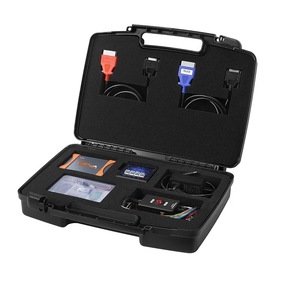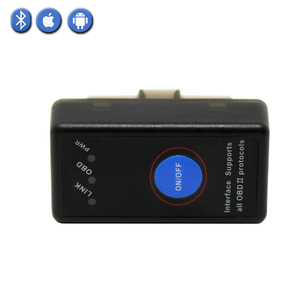(1372 products available)




























































































































































































































A car computer programmer is a device used to read, write, and modify the settings and information stored in a vehicle's electronic control unit (ECU). It is also known as a car ECU programmer or car diagnostic tool. The device allows access to the software that controls various functions of the car, such as the engine, transmission, ABS, airbag, and other critical systems. By using a car computer programmer, one can update, customize, or even repair the software in the ECU to improve performance, increase fuel efficiency, add new features, or fix faults. There are different types of car computer programmers, each with its unique features and uses. They include:
Typically, the specifications of a car computer programmer will depend on the type and model. Here are some common ones:
It is also important to maintain a car computer programmer to ensure longevity and optimal performance. Here are some tips:
With so many options available, selecting the right car computer programmer can be challenging. Here are some tips to help retailers choose the right car computer programmer for their needs:
Compatibility
When selecting a car computer programmer, ensure it is compatible with the specific make and model of the car. Different vehicles use different programming languages and protocols. Therefore, a programmer that works on one car may not work on another.
Functionality
Consider what functions are needed from the car computer programmer. Some basic models allow for reading and writing parameters. However, more advanced ones offer features such as firmware updates, key synchronization, and module coding. Find a balance between the required functionality and the budget.
Ease of Use
Choose a programmer that is easy to use, especially if the tasks will be performed infrequently. Look for clear interfaces, step-by-step instructions, and good online documentation or customer support. Complex tools with minimal guidance can lead to frustration and potential car damage.
Updates
The automotive industry evolves, with new models and technologies introduced regularly. Select a programmer with an active company that provides periodic updates to stay current with changing vehicles. This ensures the tool remains relevant and effective over time.
Quality and Reputation
Invest in a well-known, high-quality programmer. Read reviews, ask for recommendations, and research the market for reliable tools. Cheaper, unknown brands may save money initially but could lack quality, durability, or ongoing support.
Warranty and Support
Consider the warranty and customer support offered by the programmer manufacturer. A solid warranty protects the purchase, while responsive customer support can assist with any problems or questions that arise.
Price
While price shouldn't be the only consideration when selecting a car computer programmer, it is essential to most buyers. Set a budget before shopping and compare features, compatibility, and reputation across different price points. Sometimes, spending a little more upfront can save money and hassle in the long run.
It is not so easy to replace a car computer program. But, here are some steps that can make it easy:
After doing all these steps, the old car programming will be replaced.
Q1: What is a car computer programmer?
A1: A car computer programmer is an electronic device used to communicate with a car's computer system. It is also known as a scan tool or OBD-II scanner. The car computer programmer reads and clears diagnostic trouble codes (DTCs), monitors real-time data from various sensors, and performs other diagnostic functions.
Q2: Why is a car computer programmer important?
A2: A car computer programmer is important because it enables access to a vehicle's onboard diagnostic system. This access helps identify and troubleshoot issues, ensuring the car operates optimally. By using a car computer programmer, mechanics and car owners can be proactive in maintaining vehicle health, potentially saving time and money on repairs.
Q3: Can car computer programmers be used on all vehicles?
A3: In general, all vehicles support car computer programmers. However, the functionality may vary depending on the vehicle's make, model, and year. Some older cars have limited OBD-II systems, which might not provide as much data or be compatible with all functions as newer cars.
Q4: Do users need any special skills to operate a car computer programmer?
A4: No, users do not need any special skills to operate a car computer programmer. Most programmers are designed to be user-friendly, with intuitive interfaces and step-by-step instructions. Some only require basic literacy and familiarity with modern technology, such as smartphones or computers.
Q5: Can a car computer programmer perform any programming or coding functions?
A5: Some advanced, like the launch x431, can perform programming or coding functions, such as adapting new keys, coding new modules, or changing certain vehicle parameters. These typically have more extensive capabilities and cover more advanced functions. However, basic ones are limited to diagnostics and data reading/writing.